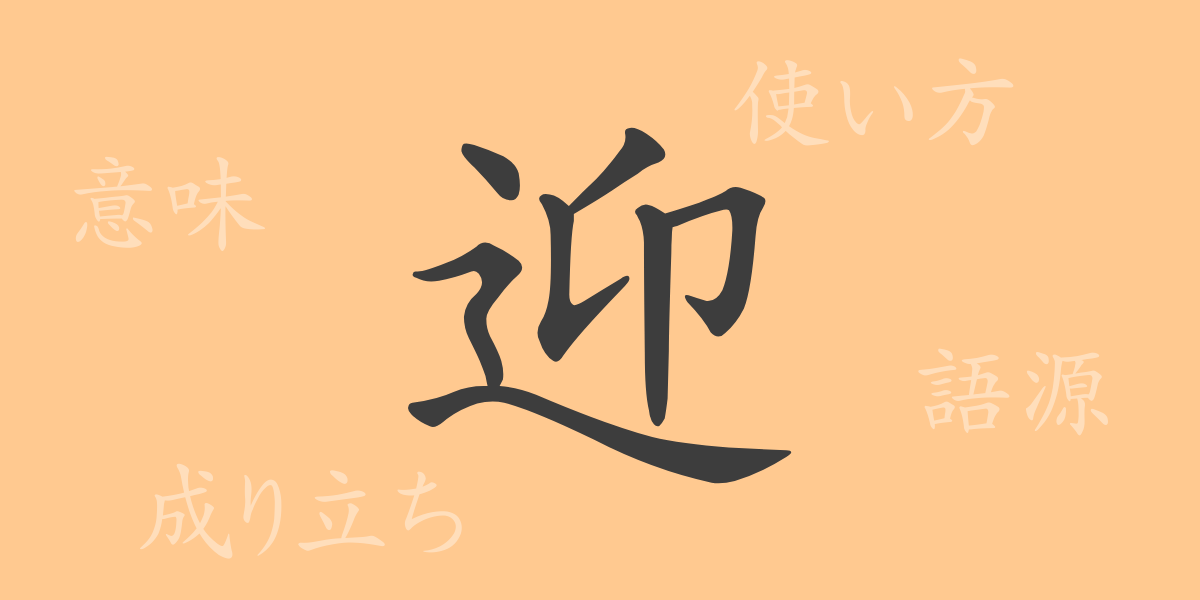In Japanese culture, kanji are more than just characters. They convey not only meanings but also encompass history, philosophy, and even aesthetic sense. This time, we focus on the commonly used kanji “迎(むか.える, gei)” to explore its rich background. “迎(むか.える, gei)” is a kanji frequently used in daily life, with a wide range of applications. Through this article, we delve deeply into the origins, meanings, uses, and beautiful idioms associated with “迎(むか.える, gei).”
Origin of 迎(むか.える, gei) (Etymology)
The kanji “迎(むか.える, gei)” evolved from ancient Chinese pictographs. It originally combined “辵(しんにょう, shinnyou),” representing a walking person, and “卬(あん, an),” symbolizing two people facing each other. This combination visually captures the essence of the act of welcoming. Over time, “迎(むか.える, gei)” has become more simplified, yet it retains the original meaning of greeting and receiving.
Meanings and Uses of 迎(むか.える, gei)
The basic meaning of “迎(むか.える, gei)” is “to welcome” or “to greet,” referring to the act of actively receiving something or someone. This kanji conveys the idea of hospitality and readiness to accept something new. It encompasses not only physical actions but also psychological acceptance and preparation. “迎(むか.える, gei)” is used in contexts ranging from interpersonal interactions to seasonal changes and new beginnings.
Readings, Stroke Count, and Radical of 迎(むか.える, gei)
Understanding the readings and components of the kanji “迎(むか.える, gei)” is essential for its use.
- Readings: The on’yomi (Chinese reading) is “ゲイ(gei),” and the kun’yomi (Japanese reading) is “むか.える(mukaeru).”
- Stroke count: “迎(むか.える, gei)” has 7 strokes.
- Radical: The radical is “辵(しんにょう, shinnyou),” related to walking or paths.
Idioms, Expressions, and Proverbs Using 迎(むか.える, gei)
Idioms and proverbs containing “迎(むか.える, gei)” are widely used in Japanese, each with unique meanings and nuances. For example, “迎春(げいしゅん, geishun)” means welcoming the New Year, “出迎え(でむかえ, demukae)” refers to meeting guests, and “送迎(そうげい, sougei)” denotes the act of pick-up and drop-off services. These terms illustrate the richness of Japanese expressions.
Conclusion on 迎(むか.える, gei)
The kanji “迎(むか.える, gei)” has been passed down through over a thousand years, retaining its shape and meaning. This single character encapsulates the idea of welcoming and being ready to accept something new. In daily life, we unconsciously practice the spirit of “迎(むか.える, gei).” This article aims to help you understand the deep meanings behind each kanji character.

























